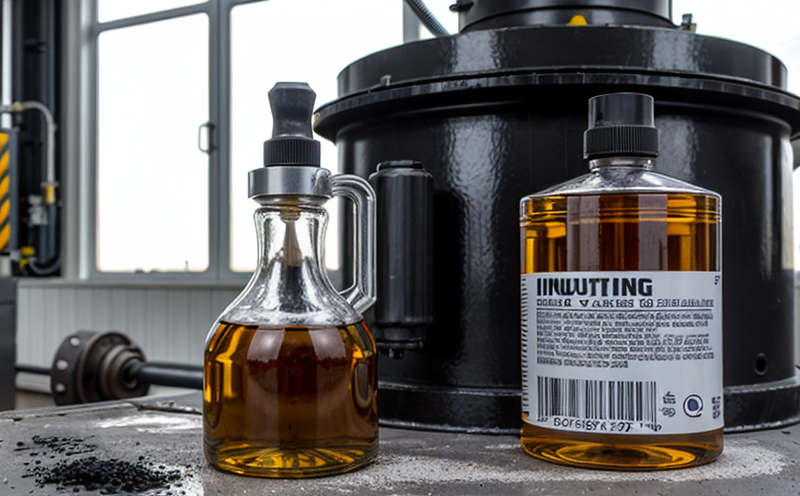ISO 6617 Neutralization Number Testing of Oils
The ISO 6617 standard specifies a method for determining the neutralization number (NN) of lubricating oils and greases. This test is crucial in the chemical testing sector as it helps ensure the quality and stability of industrial oils, which are used extensively across various industries such as manufacturing, automotive, and aviation.
The neutralization number provides insight into the acidity or basicity of an oil by measuring its capacity to neutralize strong acids. In industrial applications, this parameter is vital because it reflects the oil's ability to prevent corrosion and ensure optimal performance in machinery. A higher neutralization number indicates greater alkalinity, which can be beneficial but also suggests potential degradation if not managed properly.
For quality managers and compliance officers, understanding the neutralization number is essential for maintaining standards and ensuring that purchased or manufactured oils meet specific criteria. R&D engineers rely on this test to develop new formulations that balance necessary alkalinity with minimal impurities. Procurement teams use these results to evaluate suppliers and select products that align with their quality specifications.
Accurate neutralization number testing is performed using a titration method where the sample oil is mixed with a standardized solution of potassium hydroxide (KOH) in ethanol. The endpoint is determined by observing the color change from pale yellow to pink, indicating complete neutralization. This process requires precise measurement and careful handling to avoid contamination or error.
| Industry Sector | Application |
|---|---|
| Mining | Determining the corrosiveness of hydraulic fluids to protect mining equipment. |
| Manufacturing | Evaluating lubricants used in precision machinery to ensure longevity and performance. |
| Agriculture | Monitoring the quality of hydraulic fluids used in tractors and other farm equipment. |
| Oil & Gas | Assessing lubricants for downhole components to ensure operational reliability. |
- Lubricant formulators can use this test to adjust the formulation of new products to achieve desired neutralization numbers.
- Manufacturers need to monitor neutralization number regularly to ensure consistency and quality control.
- Suppliers must provide oils with consistent neutralization numbers to meet customer specifications.





